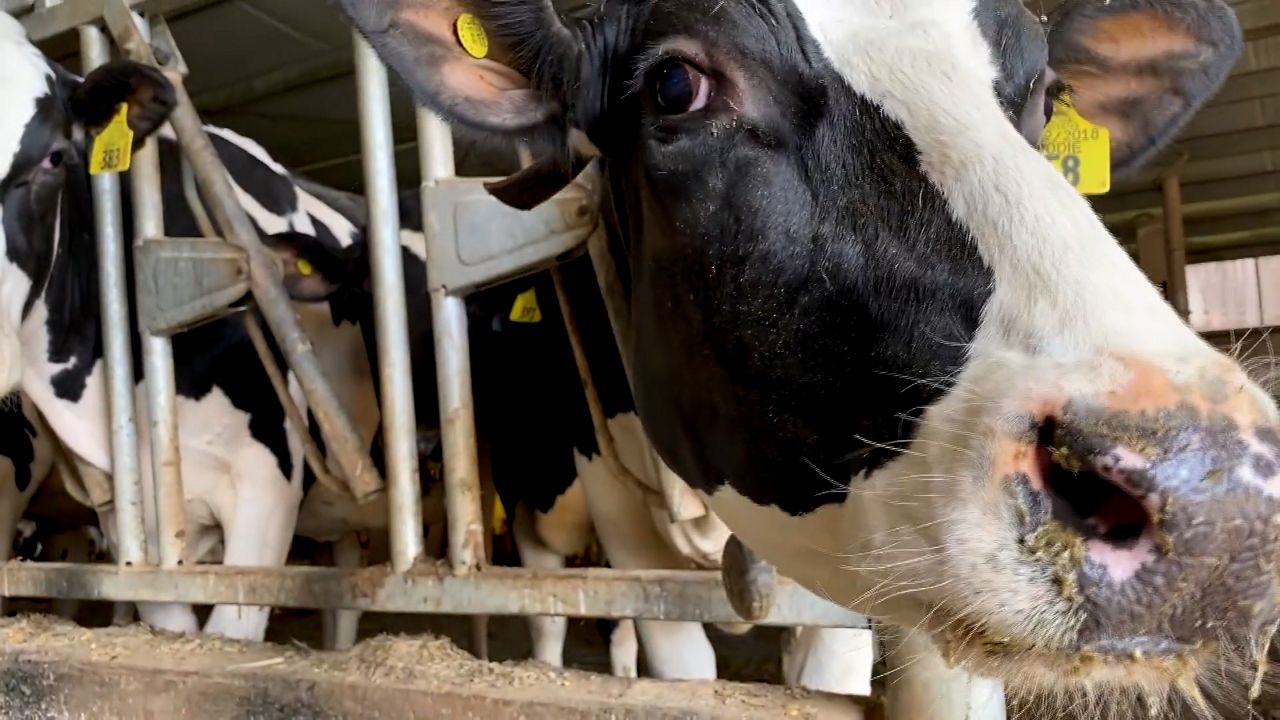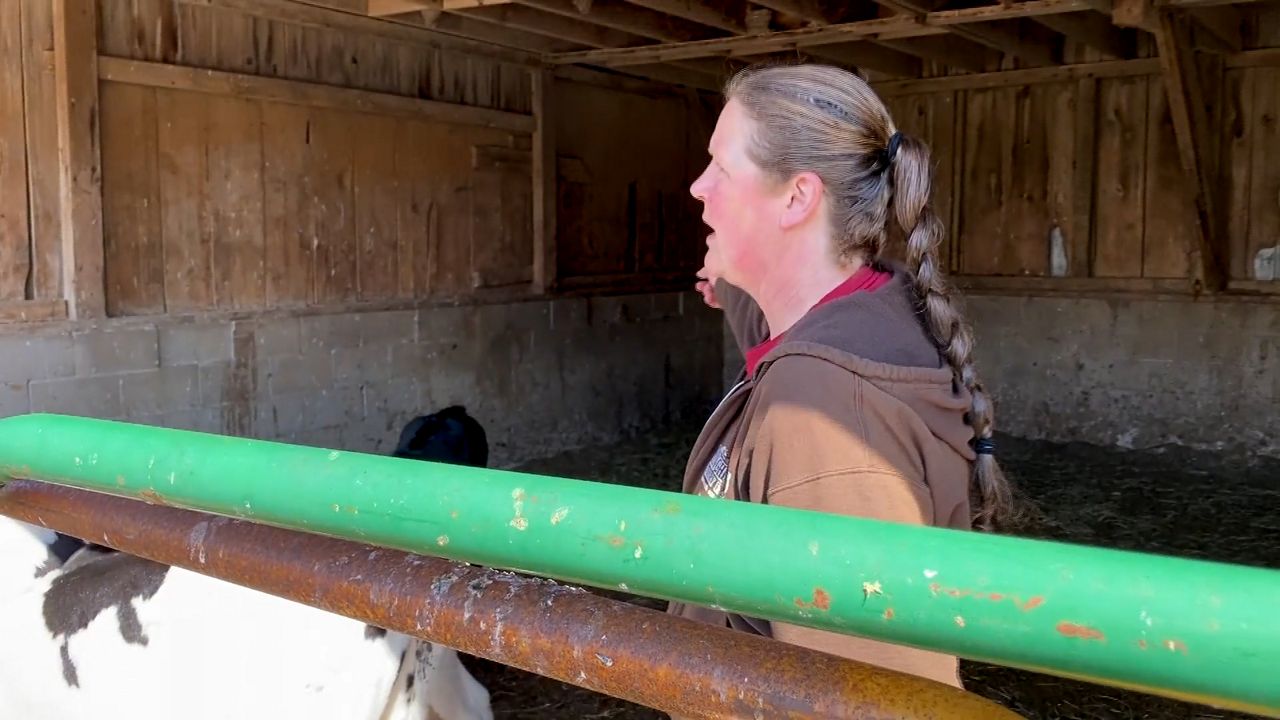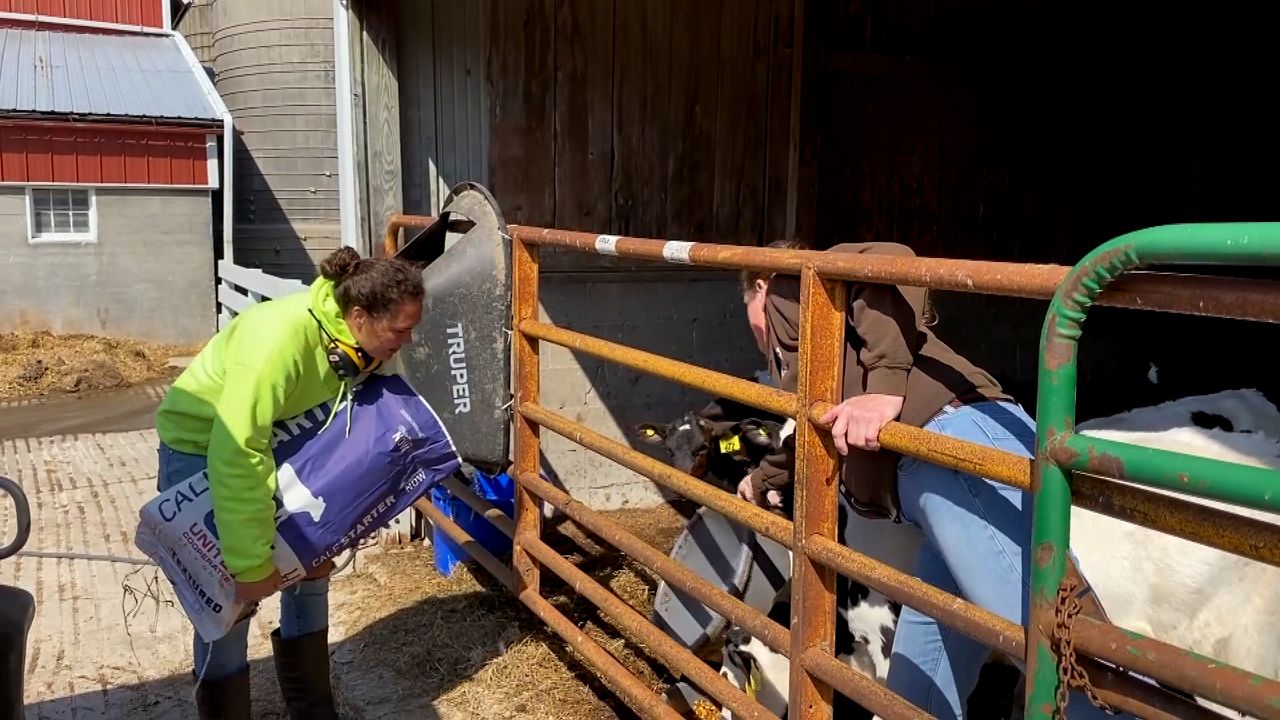Editor’s note: Second of a two-part series on robotic milking systems designed for dairy farms. Two University of Wisconsin-River Falls professors will conduct a research study on RBS, and one Wisconsin farmer who uses robotic milking systems says they saved their family farm. Read part one here.
Role reversal is something kids often think they would relish. But when they have to try it on for size, it’s not a comfortable fit.
Especially with your parents. But it reached a point where Tina Hinchley’s daughter had seen enough.
Anna Hinchley watched her mom milking cows in the barn nine hours a day. She was often by herself. Anna’s dad had his own workload to conquer on the farm. Help was unreliable.
What You Need To Know
- Professors at the University of Wisconsin-River Falls, in collaboration with four other universities, were awarded a $250,000 grant to study the financial, environmental and social effects of robotic milking systems on dairy farms
- Robotic milking is a voluntary milking system that allows cows to set their own milking schedule. Because the robot milks the cow, farmers have more flexibility in how they use their time and more time to devote to farm management
- Automatic milking systems collect information on milk quantity and quality and cow health, which helps farmers better manage their herd
- The plan is to have the project completed by October 2024
“She saw that I was killing myself,” Hinchley said.
Armed with a Dairy Science degree from the University of Wisconsin and the knowledge from a summer internship where she analyzed and evaluated about 60 robotic farms, Anna Hinchley, more or less, laid down an ultimatum.
“She did this proposal of, ‘If you bring robots to the farm, I’ll come back,’” Hinchley said.
Otherwise …
So they toured various farms and checked out various robotic milking systems.
“Talking with those farmers, they shared with us what changed in their lives,” Hinchley said.
She understood that change was not only good, but necessary. So in December 2019, the Hinchleys installed four robotic milking machines as part of a larger investment in their Cambridge dairy farm.

“I think I’m a better farmer,” Tina said. “Well, I know I’m a better farmer. I’m a better manager. And, with that, I’m a better mom and a better wife. I’ve got a little bit more time to do other things.”
Robotic milking systems have been around for a while. But because of many unknowns and a significant upfront cost — roughly $150,000-$200,000 — they haven’t lit up the dairy industry.
To that end, two University of Wisconsin-River Falls professors received a $250,000 grant to study the financial, environmental and social effects of robotic milking systems on dairy farms. The project is expected to be completed in October 2024.
“A lot of (information) is driven by hearsay, and what robotic milker manufacturers are saying,” said Shaheer Burney, a professor in the Department of Agricultural Economics at UWRF and is co-leading the study. “That’s not always accurate.
“And it’s really timely because it’s a new technology that is now starting to become assimilated in dairy farming.”
Tina Hinchley is already sold.
“Oh absolutely,” she said. “100%.”
Perhaps the greatest advantage RMS offers is cows set their own milking schedule.
“On our farm, they’re going through an average of three times a day,” Hinchley said. “But we do have some that go through four, five times.
“When we were in the tie stall barn, I only milked twice a day. And if you can have a cow that produces more milk, rather than more cows, this is definitely more sustainable.”

Robotic milking systems also act like a neighborhood bar, a place where the cows can hang out and bond. It’s an important component for their health and well-being.
“It’s definitely a social environment,” said Hinchley. “In the robot, the cows can milk themselves. They can eat when they want. They can go get a drink when they want. There are brushes for them. There are waterbed mattresses, so they can take a snooze. Food is always available. It’s the ultimate in what the technology is available right now.”
The robots also track over 110 data points for each cow.
“It’s going to take her temperature,” she said. “It’s going to do conductivity. We also have a somatic cell count. So we’re going to be able to pick out if that cow is getting sick way before we could have anticipated any time before.”
If something happens with a robot, it automatically gives Hinchley a call.
“They tell you what robot it is and what the issue is,” she said.
Hinchley said they can often decipher and fix the issue themselves. When they can’t, they have a company nearby that offers round-the-clock support.
“They don’t want to come out at two in the morning,” she said. “So I can tell them over the phone and tell them what’s going on. They can actually interface with our computers and see what’s going on and they talk us through it. If by chance we can’t figure it out, they can come out with their technician truck and they can fix it. Usually it’s within two hours.”
So what has all this meant?
“We actually had the farm managed by three high school kids in 2019,” Hinchley said. “And our whole family, with my mother dying of cancer, we went to my son’s wedding out in Seattle for seven days. That was the first time we ever had a family vacation. Ever. And so it’s definitely life changing.”
Life-changing on many fronts.
“If you want a family member to come back to the farm, and you have not kept up to date in your technology, your kids aren’t coming home,” Hinchley said. “They have no reason to come home. There isn’t enough money in the dairy industry to keep these kids at home.
“So if you want your kids to come home, you better provide something for them to come home to. And that’s what we did for our daughter Anna.”
Story idea? You can reach Mike Woods at 920-246-6321 or at: michael.t.woods1@charter.com



